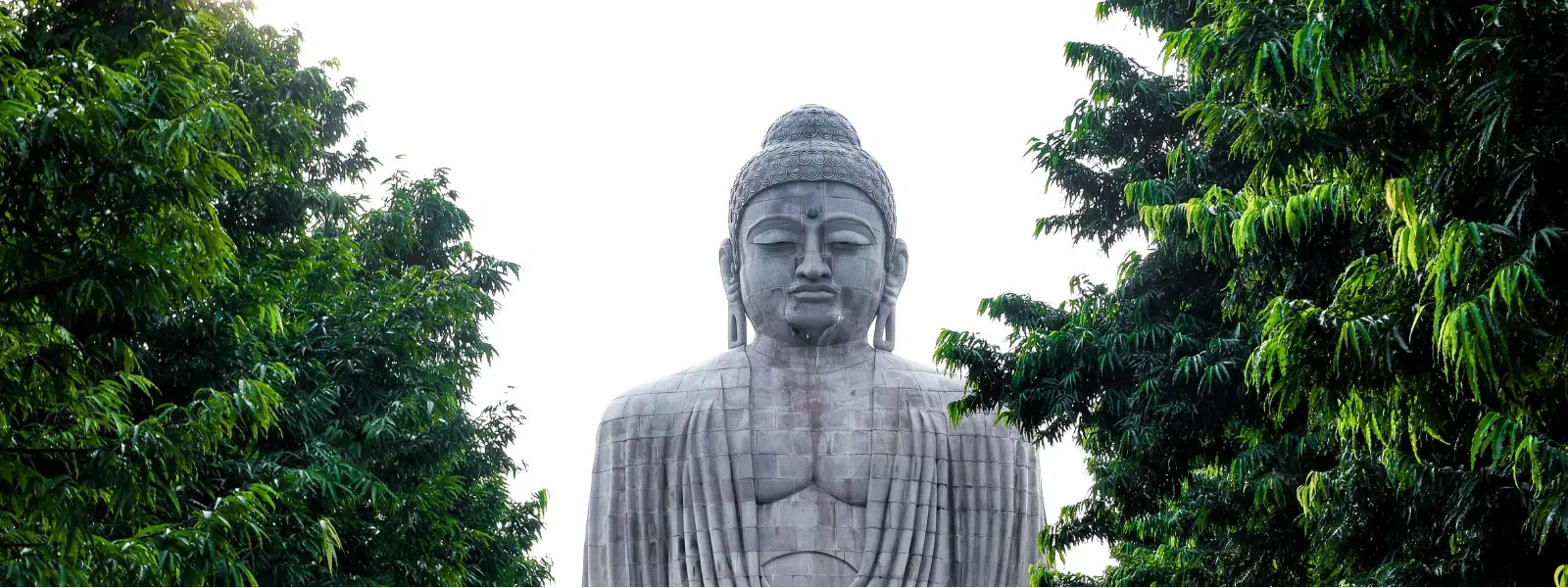
Flights
•04 min read

The Mahabodhi Temple Complex in Bodh Gaya is a realm where history meets spirituality. Located at the revered site where Lord Buddha attained enlightenment, this UNESCO World Heritage site promises a journey that is both soul-stirring and culturally enriching. In this comprehensive guide, you will discover the ancient history, mesmerizing architecture, and profound spiritual significance of the Bodh Gaya Mahabodhi Temple UNESCO, along with essential travel tips for every kind of visitor.
The Mahabodhi Temple's designation as a UNESCO World Heritage Site is rooted in its undeniable cultural and spiritual importance. Recognized for its unique architectural design and historical significance, the temple stands as a testament to ancient ingenuity. The criteria for its UNESCO listing include its exceptional representation of early brick architecture in India and its unrivaled status as the Buddha enlightenment site.
Bodh Gaya is celebrated as one of the most important pilgrimage sites in the world. For Buddhists, it is a destination that resonates deeply with spiritual history. Central to its sanctity is the legendary Mahabodhi Tree, believed to be planted from the original Bodhi Tree under which Buddha meditated. This sacred connection draws pilgrims and travelers alike, offering a glimpse into a legacy that has nurtured spiritual seekers for millennia.
The origins of the Mahabodhi Temple date back to the reign of Emperor Ashoka in the 3rd century BCE, when Buddhism was spreading across Asia. Over the centuries, the Gupta dynasty also made significant contributions, refining the temple's architecture with elegant details that are admired to this day. This blend of eras provides visitors with a layered historical narrative where each stone tells a story of past grandeur.
As centuries passed, the temple experienced periods of neglect and decline. However, inspired by its eternal significance, numerous Buddhist organizations and local communities rallied to restore and preserve this sacred site. Their continuous efforts have reestablished the temple as a beacon of enlightenment, ensuring that the legacy of spiritual wisdom remains intact.
The Mahabodhi Temple is one of the oldest brick structures in India, showcasing the architectural brilliance of the Gupta period.

The temple stands out with its distinctive pyramidal structure and intricate carvings that seem to whisper tales of antiquity. At its center is the revered stupa, surrounded by a series of shrines and smaller temples, each contributing to the overall aura of the site. The design of the Mahabodhi Temple seamlessly integrates art and spirituality, inviting visitors to marvel at its elegance.
Beyond the central temple, the complex offers several fascinating features:
The Mahabodhi Tree: Nestled within the grounds, this tree is the spiritual heart of Bodh Gaya, symbolizing awakening and renewal.
Mucalinda Lake: This tranquil lake is tied to the legend of the serpent king Mucalinda, who sheltered the meditating Buddha.
Sujata Stupa: Situated nearby, this site commemorates the compassionate figure of Sujata, whose offering is linked to the Buddha’s journey to enlightenment.
The Bodh Gaya Buddhist temple is not just an architectural wonder; it is alive with ancient rituals and ceremonies performed by devout pilgrims. Daily worship, meditation sessions, and community gatherings foster an environment of peace and mindfulness. The international Buddhist community plays an active role in preserving these traditions and maintaining the sanctity of the temple complex.
The optimal time to visit Bodh Gaya is during the cooler months, from October to March. During this period, the weather is pleasant, making it easier to explore the sprawling temple complex and its surroundings. Additionally, local festivals offer a unique glimpse into the region's vibrant cultural offerings.
Getting to Bodh Gaya is straightforward with multiple transport options available. Whether you choose to travel by road or rail, the route is well-connected to major cities. Once there, you can enjoy a range of accommodations and dining options that cater to all budgets without compromising on the experience. Travelers can relax in comfortable lodgings that focus on local hospitality while indulging in the distinct flavors of regional cuisine.
Visit the Mahabodhi Temple early in the morning or during sunset to experience its serene beauty and avoid crowds.

Bodh Gaya Mahabodhi Temple UNESCO is a sanctuary for all seekers of peace and spiritual enlightenment. It stands not only as a pilgrimage site for Buddhists but also as a testament to the universal quest for mindfulness. The tranquil ambiance and timeless teachings of the Buddha create an environment where both pilgrims and casual travelers can reconnect with themselves through reflection and meditation.
The global recognition bestowed upon the Mahabodhi Temple underscores its outstanding contribution to India's rich heritage. As a UNESCO World Heritage site, it symbolizes cultural unity and historical continuity, adding immense value to the tapestry of Indian tourism. Visitors can explore this architectural marvel while gaining insight into the traditions that have shaped countless lives.
The Mahabodhi Temple in Bodh Gaya is a UNESCO World Heritage Site.
The Mahabodhi Temple is renowned as the site where Lord Buddha attained enlightenment under the Bodhi Tree.
Bodh Gaya is located in the Gaya district of Bihar, India.
The original structure was built by Emperor Ashoka in the 3rd century BCE, with later contributions from the Gupta dynasty.
Bodh Gaya is significant as the place where Buddha attained enlightenment, making it a sacred pilgrimage site for Buddhists worldwide.
The Mahabodhi Temple Complex in Bodh Gaya is not just a UNESCO World Heritage Site but also a timeless symbol of spiritual enlightenment and cultural heritage. By exploring its history, architecture, and sacred significance, visitors can truly connect with the profound legacy of Buddhism. Whether you are a planner, a wanderer, a professional, or a luxury seeker, Bodh Gaya offers an enriching experience that transcends the ordinary and invites you into a realm of peace, reflection, and discovery.